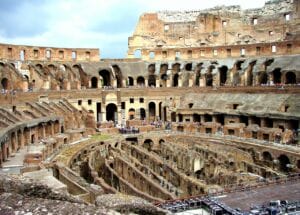Economic engine: Arizona tourism industry packs an economic punch of $17.7 billion yearly
Tourism is one of the largest industries in Arizona, but it isn’t just about hotels and golf courses.
Its direct economic impact of $17.7 billion has helped keep the state afloat during some of its darkest economic days, and the ripple effect is even greater. Those dollars spill over to a host of businesses, from the farmers who supply produce to the hotel restaurants to the car dealers who sell vehicles to the banquet servers. They also help keep our police officers and firefighters on the streets, thanks to tax revenues.
“That trickle-down money does affect everyone who is a citizen of Arizona, to some degree,” said Sherry Henry, director of the Arizona Office of Tourism.
And the money keeps coming, thanks to nearly 37 million overnight visitors annually.
“It’s so important to recognize the tourism industry is always here,” Henry said. “Even in recessionary times, people are still traveling.”
Tourism spending was up 7.9 percent in Arizona from 2009 to 2010 and has increased 25 percent since 2000. Overall, it’s still down 7 percent from its heyday of 2007, but most other indicators are moving in the right direction: Tax revenues, occupancy rates and demand are all up from 2009.
“It’s not that we don’t feel the effects of the recession,” Henry said, “but we’re still in the game.”
While the state has lost 11 percent of its tourism jobs since its high of about 173,400 in 2007, the industry still brings in $48 million a day. Tourism is the number one export industry in Arizona.
One way that benefits every resident directly is when the tax bills come. Taxes from tourism generate $1.3 billion in local and state revenue, which pays for everything from public safety to parks to libraries.
“When you look at the taxes generated, (tourism) saves every Arizona resident $1,000,” Henry said. Her agency, which was created in 1975, is responsible for marketing the state as a whole with multiple programs: advertising, public relations, community outreach, trade and media, and digital and social media, to all domestic and international visitors.
“(Travelers) have a lot of choices, so it’s important your destination stays in top of mind,” Henry said.
Part of the money for tourism outreach comes from tribal gaming. In the fiscal year ending June 30, 2011, tribal gaming revenues contributed $5.5 million to the state’s Tourism Fund. That comes from the $79 million total they deposited to the state, with another 12 percent of their annual revenue of almost $1.7 billion going to cities, towns and counties.
In addition, said Melody Hudson, public relations manager for Gila River Gaming Enterprises, “We have a deep and wide reach as far as our philanthropic activities, too.”
Tourism weaves through the fabric of our economy in ways that aren’t always obvious. Jesse Thompson, director of sales and marketing for the Hotel Valley Ho in Scottsdale, gave a list of local businesses that the hotel supports. Zuzu, its on-site restaurant, gets a good deal of its ingredients from local purveyors such as Red Bird Farms, McClendon Farms, Duncan Farms, Crave Artisan Ice Cream and Hickman Family Farms. Audio-visual contractors, limo and taxi drivers, independent conference planners, beverage distributors, decorators, and even the company that launders their linens – sheets, towels, tablecloths, spa robes – would all be affected if business dropped.
However, Thompson is proud that revenues at the 230-room Hotel Valley Ho increased 21 percent in 2011 over 2010, and he expects an 8 percent bump from 2011 to 2012. None of the 240 to 250 employees has been laid off in six years, despite the downturn. He attributes the increase in going after more group bookings.
Another way tourism boosts Arizona’s entire economy is by making the state not only an appealing place to visit, but to live. People might come to see auto shows, sporting events or festivals and decide to make a permanent move.
“People who visit Arizona often fall in love with Arizona and plot ways they can come to work here or bring their businesses,” said Glenn Hamer, president and CEO of the Arizona Chamber of Commerce and Industry. “It’s a gateway opportunity to sell the state of Arizona.”
Because the business community recognizes the importance of both visitors and tourists who become permanent residents, they work to bring major events such as the Super Bowl to the state. Hamer calls it a “showcase for our state.” In addition, the Super Bowl generated $500 million in economic impact in 2008. He expects the number to be at least that much when the Super Bowl returns to the University of Phoenix Stadium in Glendale in 2015.
The business community also supports sports tourism in general, including spring training baseball, college football bowl games, the baseball All-Star game in July 2011, the NBA All-Star game in 2009, and amateur events such as marathons, triathlons, bicycle tours and student sports meets. And it pushed for the 2008 expansion of the Phoenix Convention Center, now one of the top 20 such venues in the nation.
“Our convention business is an important part of our tourism economic engine,” Hamer said.
Unlike other industries such as manufacturing and technology, Hamer said, much of the tourism industry can’t be automated or outsourced. And thanks to the state’s natural and man-made attractions, it appears to be an industry that’s sustainable.
“Arizona as a whole relied so much on construction,” said Heather Ainardi, director of the Flagstaff Convention and Visitors Bureau, “and in the next 10 years, tourism is going to be one of the drivers of Arizona’s economy.”
Arizona tourism industry: Economic impact of major winter Valley events
College football bowl games
(Fiesta Bowl, BCS national title game and Insight Bowl)
Economic impact: $354.6 million in 2010-11
2010-11 attendance: nearly 200,000 at all three games
P.F. Chang’s Rock ‘n’ Roll Marathon
Economic impact: $59 million
2011 attendance: about 30,000 runners
Scottsdale Arabian Horse Show
Economic impact: $52-58 million
2011 attendance: about 250,000
Cactus League baseball
Economic impact: $360 million
2011 attendance: More than 1.47 million
Waste Management Phoenix Open
Economic impact: $180 million (estimated from 2008, when attendance was 538,356)
2011 attendance: 365,062 (event impacted due to weather)
Arizona Business Magazine January/February 2012




